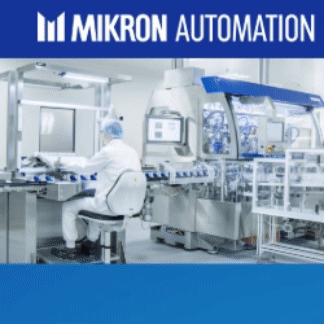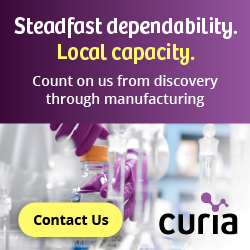Realizing Process Innovation in Aseptic Manufacturing: An Improved RABS Concept
(Bio-)pharmaceutical service providers in their role of manufacturing complex drug products face a difficult challenge in providing reliable and repeatable aseptic processes for ever-decreasing batch sizes. The two most commonly used technologies today are isolators, which traditionally are known as the best solution for a high level of sterility, and RABS (restricted access barrier systems), which provide greater flexibility and higher capacity utilization of filling lines when running multiple products. When choosing between isolator and RABS technology, each company has to make the decision that best fits its current production situation and needs. In the last several years, the CDMO Vetter has made strong efforts in starting a new approach called the Improved RABS Concept, which combines advantages of both technologies.

Figure 1. Filling Line With RABS Technology
The Improved RABS Concept, a new technological innovation in drug manufacturing comes as a targeted response to the changing manufacturing and regulatory requirements of today’s increasingly complex compounds in smaller batch sizes and the need for improved solutions in quality, safety and flexibility.
The key to the new technology is the fully-automated decontamination of the cleanroom using hydrogen peroxide (H2O2) that can be performed after each batch. This process achieves a level of safety and quality that well exceeds cGMP, and is competitive with isolator performance. Essentially, what has been created is a virtual “walk-in isolator” that offers a two-barrier concept to mitigate risk.

Figure 2. Simplified Drawing of a Two-Barrier RABS Operation
The benefits of the concept are completion of a batch-related 6-lg spore-decontamination process with a 3-hour cycle, a process that is uniquely fast by today’s standards, allowing for increased capacity utilization and overall equipment effectiveness. Prior to the start of the decontamination process, the format parts are cleaned offline, in full, automatically to remove e.g. particles, silicon or residues. This represents an important advantage as compared to isolators, where a manual cleaning process is normally applied. With the concept, the individual needs of each customer’s product are well-balanced with the need to align with regulatory and economic demands.

Figure 3. Running H2O2 Decontamination Process
For a full description of the Improved RABS Concept, please have a look in the Vetter Answer online section. Here you will find more information that showcases the advantages of RABS and isolator as a single technology, and the benefits of successfully combining core aspects of both technologies in order to increase operational excellence in aseptic drug product manufacturing.
About Vetter
Vetter is a premier contract development and manufacturing organization (CDMO) and a global leader in the fill and finish of aseptically prefilled syringe systems, cartridges and vials. Headquartered in Ravensburg, Germany, with facilities in Germany and the United States, the company provides state-of-the-art manufacturing, from early clinical development through commercial filling and packaging of parenteral drugs. The CDMO’s extensive experience covers a broad range of complex compounds, including monoclonal antibodies, peptides and interferons. Vetter supports its customers every step of the way, guiding their products through development, regulatory approval, launch and lifecycle management. Known for quality, the company offers a foundation of experience spanning more than 35 years, including dozens of product approvals for novel bio/ pharmaceutical compounds. Since 2014, Vetter operates a representative office in Singapore, increasing the presence of the company and the awareness of its service portfolio in the Asian healthcare market. Visit www.vetter-pharma.com.
Total Page Views: 817














